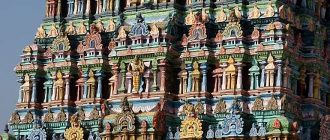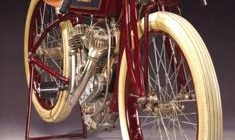Want to buy paintings of Indian mothers? Read on to find out about the depiction of motherhood in Indian paintings…
Women have been an integral part of Indian art, especially after the decline of Buddhism in India when portrayals of the Gautama Buddha and his teachings were supplanted by icons of Hindu goddesses such as Durga, Parvathi, Lakshmi, and Kali; and mothers, lovers, and wives in the form of Yoshada, Sita, Draupadi, and Shakuntala. We shall look at some prominent portrayals of women and the mother image in Indian paintings and art.
Depictions of Motherhood in the Bhimbetka Cave Paintings
These are some of the most ancient cave pictographs (pigment color paintings on cave walls) and petroglyphs (etchings and engravings on stone) in the world. The civilization dates back to the Neolithic era and even as far back as a hundred thousand years ago; paintings as ancient as twelve thousand years old have been found in the caves near Bhopal in the Indian state of Madhya Pradesh. The second oldest period of Bhimbetka paintings from the Mesolithic era show portrayals of mothers and women pregnant with children as well as the ubiquitous hunting scenes, communal dances, and scenes of day-to-day life.
The Sadanga of Indian Painting
About twenty one hundred years ago, the Sadanga or Six Limbed Nature of Indian painting was codified and it was preserved in the third century by Vatsyayana in his Kamasutra.
The six principles are Rupabheda or human appearance and form; Pramanam or perception of structure; Bhava or the effect of emotions on human form; Lavanya Yojanam or artistic grace; Sadrisyam or similitude; and Varnikabhanga or the use of brush strokes and color. From their inception, these principles were to dominate the emotive and lyrically graceful portrayal of women and motherhood in Indian painting.
Queen Maya Gives Birth to the Gautama Buddha
Major Buddhist art flourished from the first century to the ninth century in India when the religion was supplanted by Hinduism and Jainism. The Ajantha caves chronicle the various reincarnations of the Gautama Buddha and his lessons and teachings as well his ascent through the Bodhisattva stages to complete enlightenment.
Women and wives are also portrayed in some paintings but the most important images are the ones such as Queen Maya’s dream of a white elephant and the conception of the Buddha found in the Gandhara civilization in the Indus Valley and which dates to the second century. Other images of the birth of the Buddha are found in temples in countries as far away as Laos and Indonesia.
Portrayals of Mothers in Hindu Paintings
Hindu mythology is dominated by the portrayals of goddesses and heroines as wives and mothers. Aditi was the celestial virgin who in Hindu mythology gave birth to the Adityas or celestial lords as well as everything else in existence. She is also supposed to be the mother of an avatar of the supreme god Vishnu.
Shakti is the primordial sacred force and is a personification of divine feminine creative power or motherhood. She is also known as Devi or Mother Gauri and is a complement of the Trimurti (trinity) of Vishnu, Siva, and Brahma; her Tridevi faces of Lakhmi, Parvathi, and Saraswati being the female counterparts of the male Hindu gods. Shakti is simply called Amma or mother in Southern India.
In classical and modern Indian painting and illustrations, the country of India itself is always portrayed as Bharat Mata or Mother India with the picture of a goddess like mother figure superimposed on a map of the Indian subcontinent.





